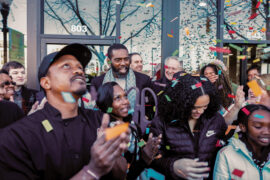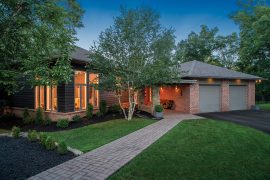Marshall University and the City of Huntington are teaming up to transform the downtown’s most neglected thoroughfare.
Article By Jack Houvouras & Amanda Larch
HQ 126 | SUMMER 2024
There was a time when Third Avenue was downtown Huntington’s sleepiest thoroughfare. One side of the avenue was home to mostly vacant buildings while the other side housed a vast parking lot — known as the Superblock — which sat empty for 30 years. Then, in 2000, developers from Columbus, Ohio, announced plans to revitalize the area with their Pullman Square project. Almost overnight, Third Avenue was transformed with shopping, dining, entertainment and refurbished office space.
Unfortunately, Third Avenue’s gain was Fourth Avenue’s loss as stores and offices began relocating to the Pullman Square area. Fourth Avenue, once the busiest retail artery in Huntington, slowly began to decline.
But all of that is about to change thanks to the vision of both Marshall University and the City of Huntington. The two entities have joined forces to breathe new life into the neglected avenue, starting at Hal Greer Boulevard and gradually moving west.
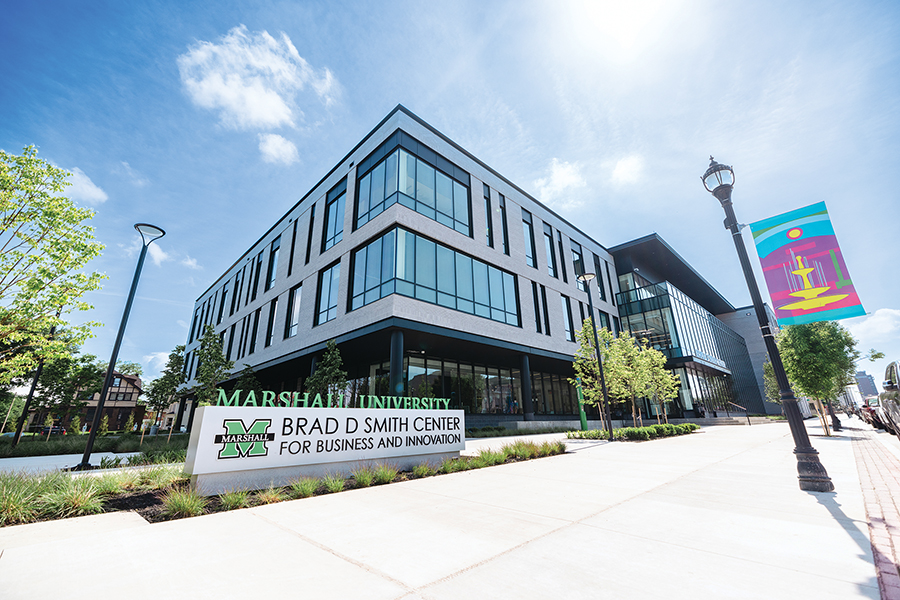
It all started in 2017, when Huntington was named “America’s Best Community” in a nationwide contest that challenged 352 cities to develop economic revitalization plans. Spearheaded by Huntington Mayor Steve Williams, the City of Huntington’s comprehensive plan was awarded the grand prize as well as a check for $3 million. One area of focus in Huntington’s proposal was named the Fairfield Innovation District, which sought to redevelop Hal Greer Boulevard and parts of Fourth Avenue.
A year later Marshall University announced that it had received a gift of $25 million from Brad and Alys Smith to build a new College of Business complex. At the time, Smith was the CEO of Intuit, a Fortune 500 software company in Silicon Valley.
We’ve decided the best course of action for the university was the continue to expand down Fourth Avenue to help complete the Fairfield Innovation District. — Brad D. Smith, president of Marshall University
“After the announcement, there was an open question of where to locate the new building,” Smith recalled. “When university officials were kind enough to ask for my perspective, I thought it would be a great opportunity to connect the campus and the community even closer, and I suggested it be located on Fourth Avenue.”
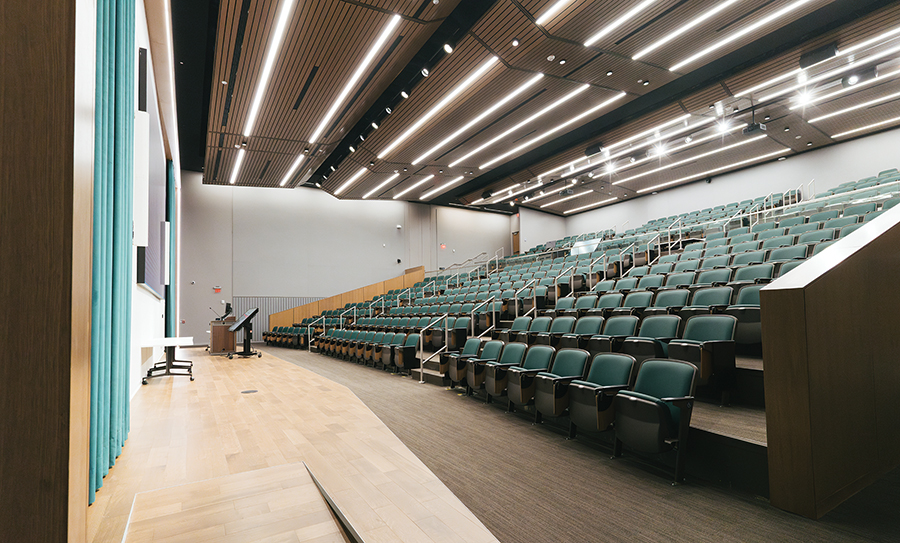
Construction began in 2021, and the Brad D. Smith Center for Business and Innovation, located on the site of the former UpTowner Inn at 1400 Fourth Ave., opened for classes at the beginning of 2024. The 78,000-square-foot building is a sprawling, modern addition to the area. It features the latest technology to educate both students and the local business community including a 360-seat auditorium, computer and finance labs, office space, meeting rooms and study spaces for students. It is equipped with conference capabilities for both small and large business gatherings. It also serves as a business incubator for aspiring entrepreneurs.
“We talk often about the importance of a town-and-gown relationship between a university and its surrounding community,” said Smith. “For 187 years, Huntington and Marshall have taken that so much further. This building symbolizes the continued strengthening of our capability and our connectivity. We are opening it up to the community so the surrounding businesses and citizens in the Fairfield Innovation District will thrive.”
Toney Stroud, chief legal officer and vice president for strategic initiatives and corporate relations at Marshall, said that in today’s world facilities matter, and students want space that allows for teamwork.
“During school, you can see the students are staying in these spaces; they’re collaborating with each other,” Stroud said. “We even noticed students from some of the other colleges coming over to the College of Business to hang out and study. It’s inviting and gives them this great environment with the newest technology.”
In the very near future, people won’t believe that we have all this in Huntington. Technology is changing so quickly that you can only imagine what Fourth Avenue will look like in three years. — Toney Stroud, chief legal officer of Marshall University
Another important step in the future development of Fourth Avenue occurred at the end of 2021 when Smith was named Marshall’s 38th president. One of the first things he did was oversee a new master plan for the university. Smith and his team began rethinking the school’s goals and footprint. The result was the “Marshall For All, Marshall Forever” campaign, which focuses on entrepreneurship, cybersecurity, health care, advanced manufacturing, new energy and aviation.
“We decided the best course of action for the university was to continue to expand down Fourth Avenue to help complete the Fairfield Innovation District,” Smith explained.
Partnering with Fairmount Properties out of Cleveland, university officials formed a master plan to develop the first two blocks of Fourth Avenue across from campus, with a total investment of $250 million.
Future development is envisioned along Fourth Avenue which will continue the strong collaboration between Fairmount Properties, Marshall, the City of Huntington and other public and private partners. The mixed-use plan connects Marshall’s campus with downtown Huntington via a high-tech corridor designed to stimulate imagination, create jobs and attract investments to Huntington.
“The plan was to start building a district that would bring people in, and hopefully result in other developers coming in, continuing west on Fourth Avenue,” said Stroud.
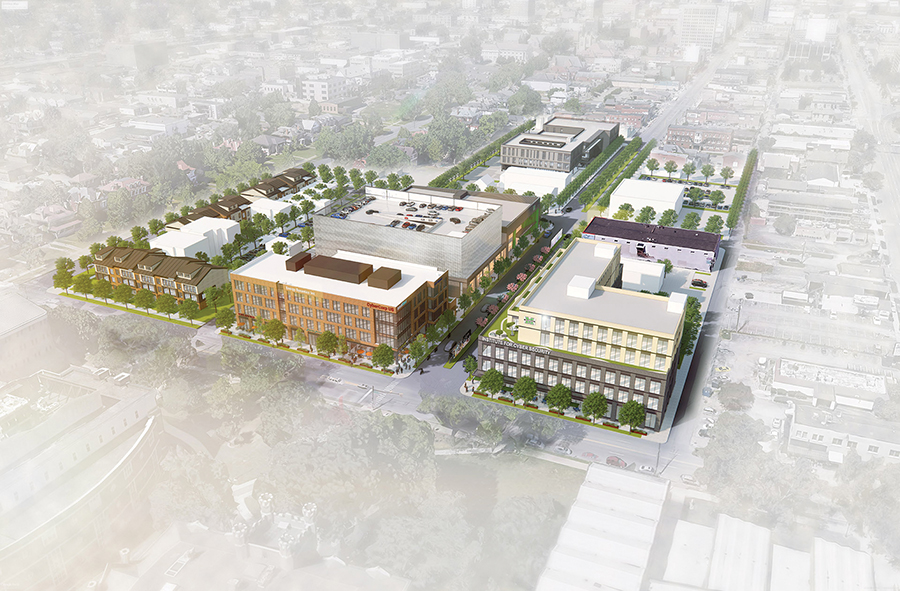
And that is exactly what’s happening. In May, Marshall broke ground on its Institute for Cyber Security, a four-story, 80,000-square-foot building that will be located on the corner of Fourth Avenue and Hal Greer Boulevard. The huge project is being made possible through several revenue sources, including grant funding, a partnership with the Joint Force Headquarters Department of Defense Information Network (JFHQ-DODIN) and an investment of $45 million from the State of West Virginia.
“We have an opportunity to be a national center to help defend the nation’s critical infrastructure,” said Bill Gardner, associate professor of cyber forensics and security at Marshall. “The new facilities will help bring the brightest minds and research dollars to Huntington, West Virginia, so that we can fight against these cyber threats.”
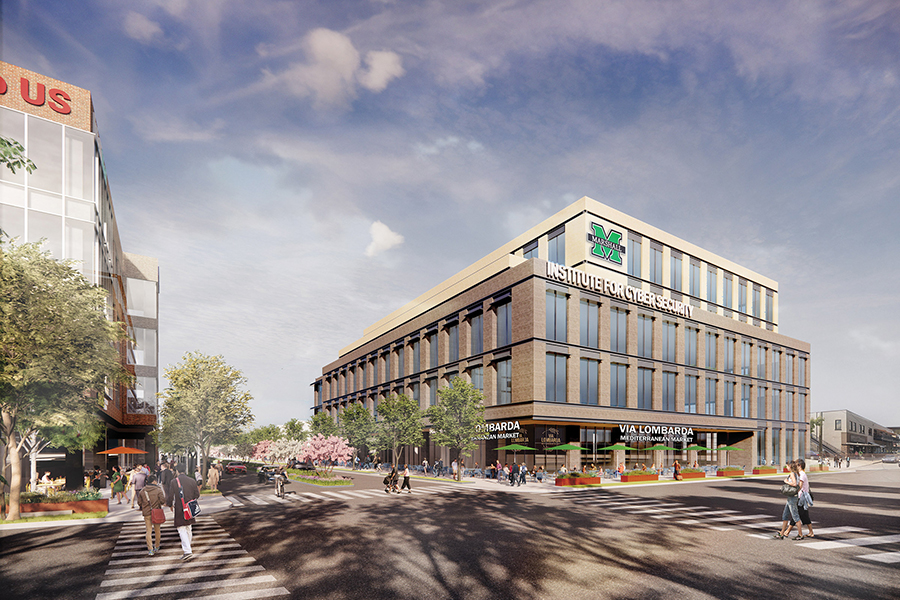
In addition to classroom space, high-tech labs and research facilities, the institute will have offices for the federal government.
“The Department of Defense, JFHQ-DODIN and U.S. Cyber Command will have their own dedicated space in the building to set up shop, and that will be a big boom to the Huntington economy,” noted Jack McFee, cyber forensic researcher and instructor at Marshall.
The Institute for Cyber Security is partly inspired by the University of Texas at San Antonio (UTSA) which is designated as a Center for Academic Excellence in all National Security Agency (NSA) focus areas, including cyber operations, cyber defense and research. When UTSA’s cybersecurity institute opened, 60 different private industry companies partnered and built around it to have access to its research, lab facilities and graduate talent pool. Smith said he anticipates the same happening for Marshall on Fourth Avenue.
These two buildings will long be remembered as the catalysts that ultimately transformed much of downtown Huntington. — Steve Williams, Mayor of Huntington
“In fact, it’s already happening,” said Smith. “We’ve had four businesses that have reached out and want to be located in and around the cybersecurity building. So, it will become a magnet for new companies. I believe this is going to be a catalyst for the entire region and for the state.”
The building’s first floor will be mixed-use, with one local dining establishment already agreeing to move in. Ralph Hagy, the owner of La Famiglia, will be opening a Mediterranean market named Via Lombarda that will offer Italian-style coffees, a variety of gelatos, fresh pastas and cheeses and imported Italian pastries. The market will also feature Roman-style pizza, lasagna, manicotti and more, with bistro-style seating.

“We’re very excited about that,” said Stroud. “Fairmount Properties is talking to others; we’re hoping to get two or three other restaurants in there. We want to make this a place that will attract people. It will be a place where people can come work and play. We want it to be a fun, vibrant place that will draw people to campus and downtown Huntington.”
Stroud said future facilities located in the Fairfield Innovation District will likely have a first-floor retail space, too.
“I think it’s going to be so transformative for Huntington,” he said. “Hopefully other developers will now come in and say, ‘This was done so well that we want to be a part of it.’”
The university hopes to break ground on the Institute for Cyber Security later this year, with 2026 as the projected completion date.
Some other Fourth Avenue projects already in the works include:
• The MU Advanced Manufacturing Center, formerly the Robert C. Byrd Institute (RCBI), will be leaving its current building at 1040 Fourth Ave. and relocating to a new facility in the 1500 block of Fourth Avenue. The new space will also be home to an Innovation Resource Hub for entrepreneurs to collaborate and have shared resources and services.
• The old Latta’s building has been acquired and renovations are set to start this fall. There are several med-tech companies interested in the space.
• The developer has plans for an additional building across the street from the Institute for Cyber Security where other cyber-related businesses will locate.
Stroud said reimagining Fourth Avenue as a mixed-use district has been an exciting project.
“In the very near future, people won’t believe that we have all this in Huntington, West Virginia,” he asserted. “Technology is changing so quickly that you can only imagine what Fourth Avenue will look like in three years.”
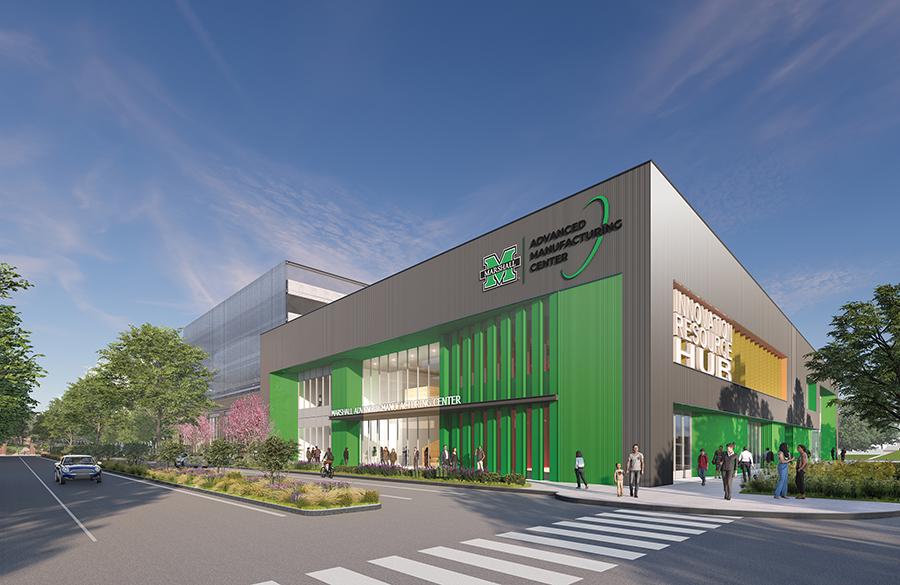
Huntington Mayor Steve Williams said the future development of Fourth Avenue will have a significant impact on the city that will pay dividends for decades.
“The significance of Marshall’s decision to build the Brad D. Smith Center and the Institute for Cyber Security on Fourth Avenue cannot be overestimated,” said Williams. “These facilities will position both Marshall and Huntington as major international players in the evolving digital economy. These two buildings will long be remembered as the catalysts that ultimately transformed much of downtown Huntington.”
Smith said the hope from the start was that these investments from Marshall would serve to reignite Fourth Avenue.
“We hope to see what we’ve seen on Third Avenue around Pullman Square — more businesses, more excitement,” he said. “Fourth Avenue will be a high-tech corridor combined with shopping, restaurants and culture via the Marshall Artists Series at the Keith-Albee Performing Arts Center. One day soon Fourth Avenue will light up the rest of the region.”


